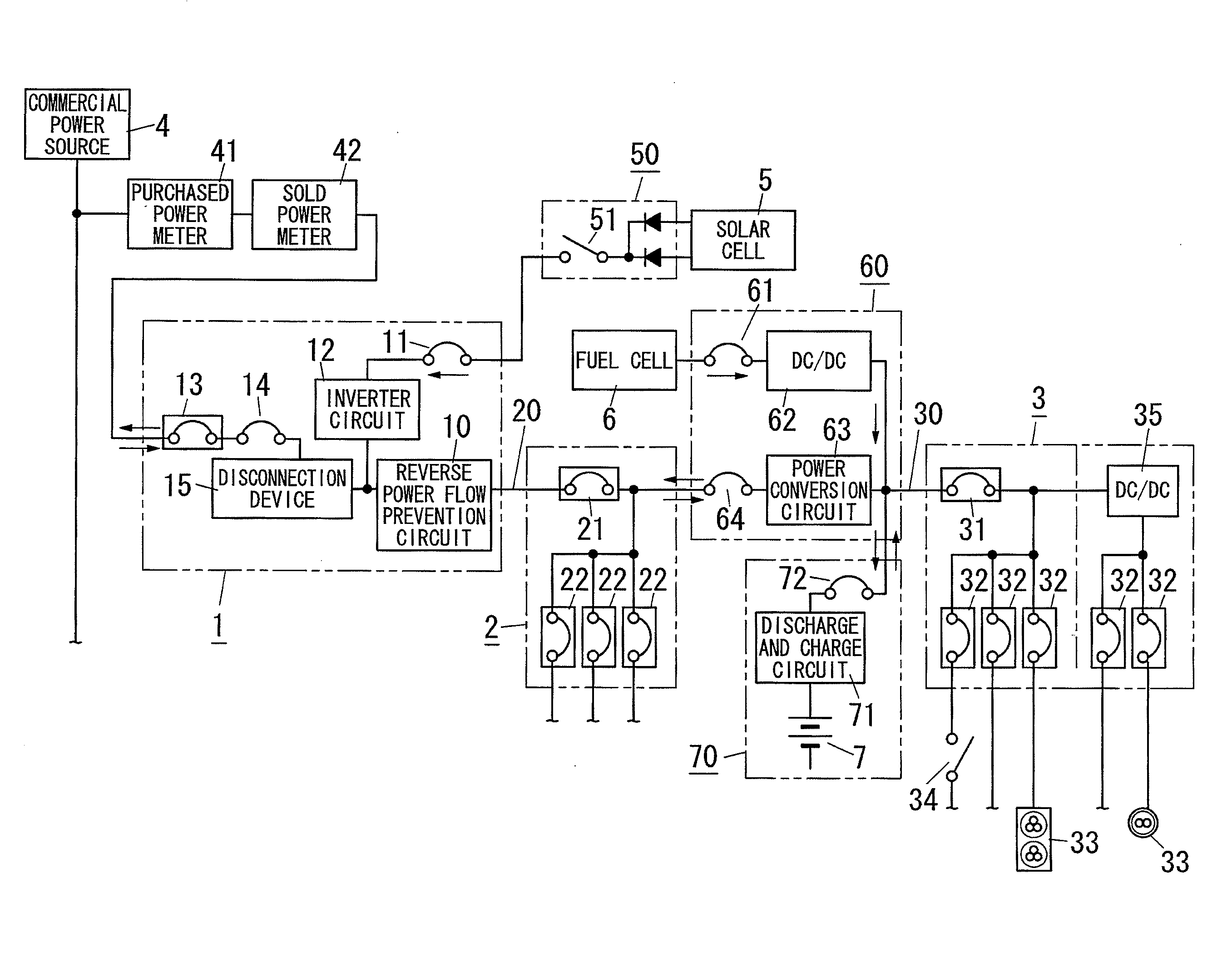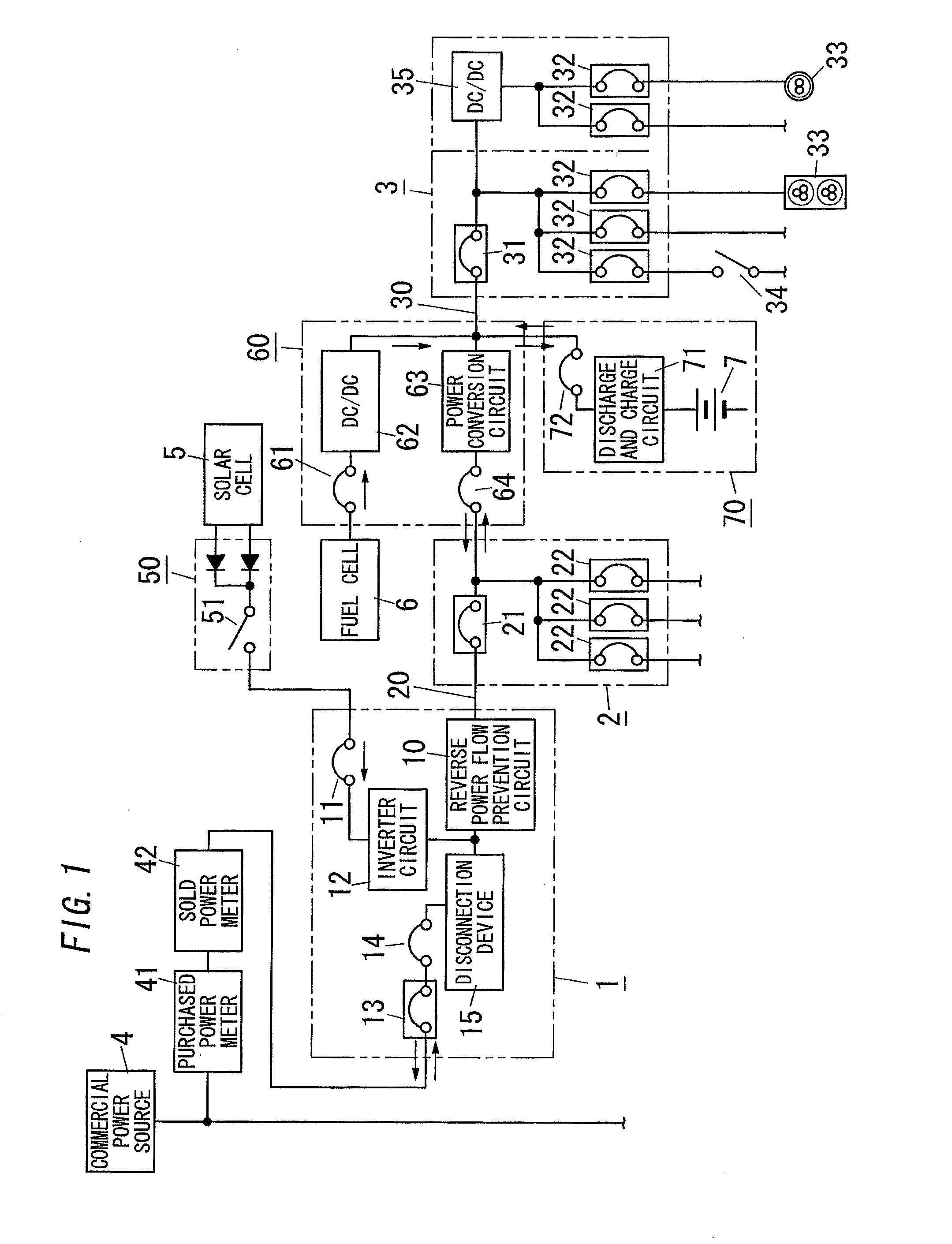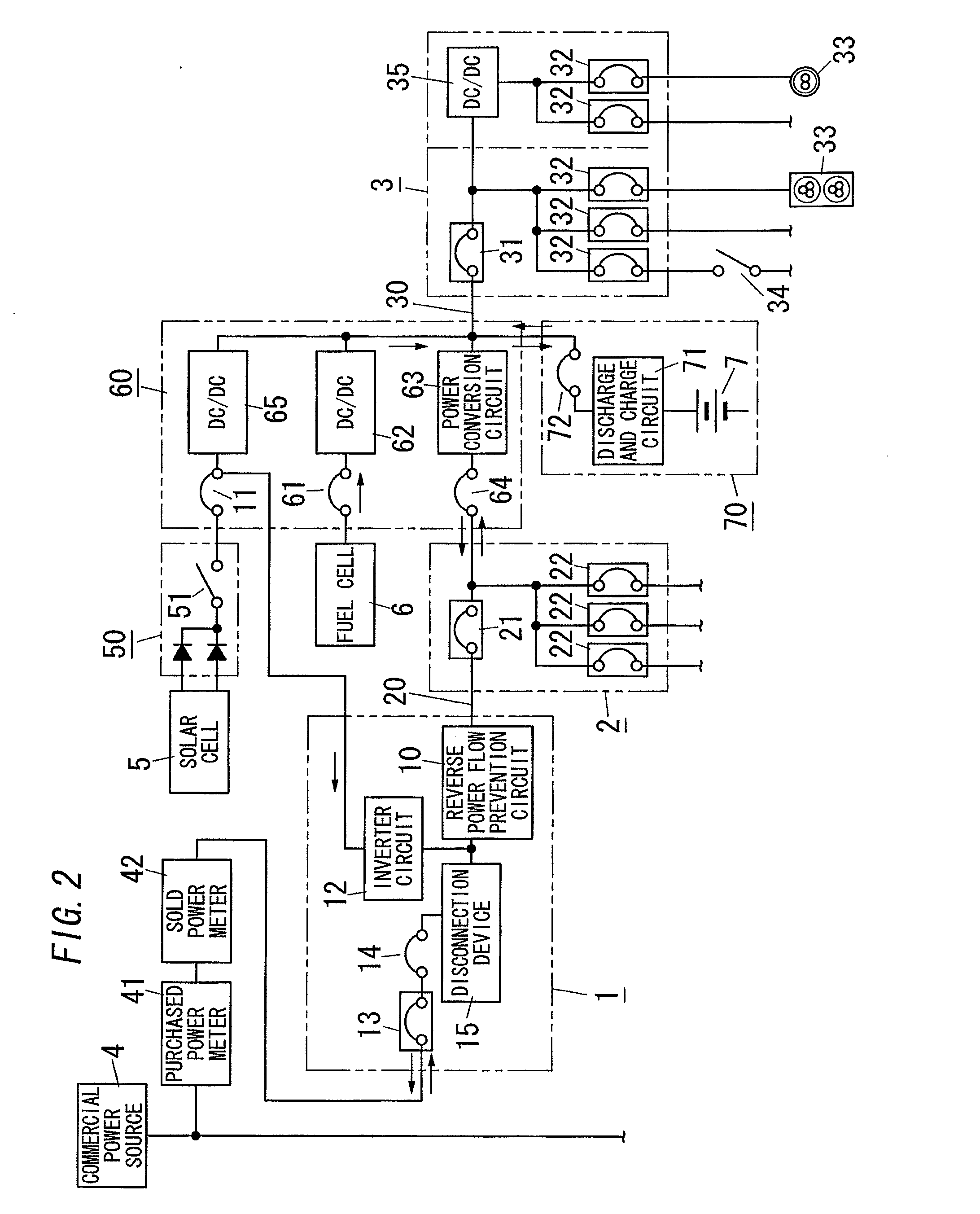Power distribution system
a technology of power distribution system and power supply, applied in the direction of dc network circuit arrangement, ac-d ac network circuit arrangement, etc., can solve the problem of complicated construction of reverse power flow prevention device, and achieve the effect of lowering cos
- Summary
- Abstract
- Description
- Claims
- Application Information
AI Technical Summary
Benefits of technology
Problems solved by technology
Method used
Image
Examples
first embodiment
[0014]As shown in FIG. 1, the power distribution system of the present embodiment is used for distributing power to loads (electric devices) installed in a residence, and includes an AC distribution board 2 and a DC distribution board 3. The AC distribution board 2 is placed in a predetermined position in the residence, and is configured to supply AC power to an AC powered load (hereinafter, referred to as “AC load”). The DC distribution board 3 is placed in a predetermined position in the residence, and is configured to supply DC power to a DC powered load (hereinafter, referred to as “DC load”).
[0015]The AC distribution board 2 is configured to accommodate a main breaker 21 being an earth leakage circuit breaker, and a plurality of branch breakers 22. Connecting a load circuit used in AC power to the branch breaker 22 enables supplying AC power to an AC load (not shown). The main breaker 21 is interposed in the AC main power path 20 connected to a commercial power source 4. Each b...
second embodiment
[0032]As shown in FIG. 2, the power distribution system of the present embodiment is different from the power distribution system of the first embodiment in that the solar cell 5 is connected to the DC main power path 30 without passing through the power conversion circuit 63.
[0033]In the present embodiment, the solar cell 5 is connected to a DC / DC converter 65 via the connection box 50 and the switch 11. The DC / DC converter 65 has its output terminal connected to the primary side terminal of the main breaker 31 of the DC distributed board 3. Further, the solar cell 5 is also connected to the inverter circuit 12 of the system coordination unit 1 via the switch 11 without passing through the DC / DC converter 65.
[0034]In the present embodiment, the control unit may be configured to keep turning off the switch 64 between the power conversion circuit 63 and the AC main power path 20 so as to separate the AC main power path 20 from the DC main power path 30 during the daytime that the sol...
third embodiment
[0037]As shown in FIG. 3, the power distribution system of the present embodiment is different from the power distribution system of the first embodiment in that the fuel cell 6 is connected to the AC main power path 20 without passing through the power conversion circuit 63.
[0038]In the present embodiment, the fuel cell 6 is connected to an inverter circuit 67 via a switch 66. The inverter circuit 67 is configured to convert DC supplied from the fuel cell 6 to AC to be supplied to the AC main power path 20. The inverter circuit 67 has its output terminal connected to the primary side terminal of the main breaker 21 of the AC distributed board 2. In brief, the reverse power flow prevention circuit 10 is interposed in the AC main power path 20 between the connection point of the solar cell 5 and the AC main power path 20 and the connection point of the fuel cell 6 and the AC main power path 20. The switch 11 and the inverter circuit 12 for the solar cell 5 are separated from the syst...
PUM
 Login to View More
Login to View More Abstract
Description
Claims
Application Information
 Login to View More
Login to View More - R&D
- Intellectual Property
- Life Sciences
- Materials
- Tech Scout
- Unparalleled Data Quality
- Higher Quality Content
- 60% Fewer Hallucinations
Browse by: Latest US Patents, China's latest patents, Technical Efficacy Thesaurus, Application Domain, Technology Topic, Popular Technical Reports.
© 2025 PatSnap. All rights reserved.Legal|Privacy policy|Modern Slavery Act Transparency Statement|Sitemap|About US| Contact US: help@patsnap.com



